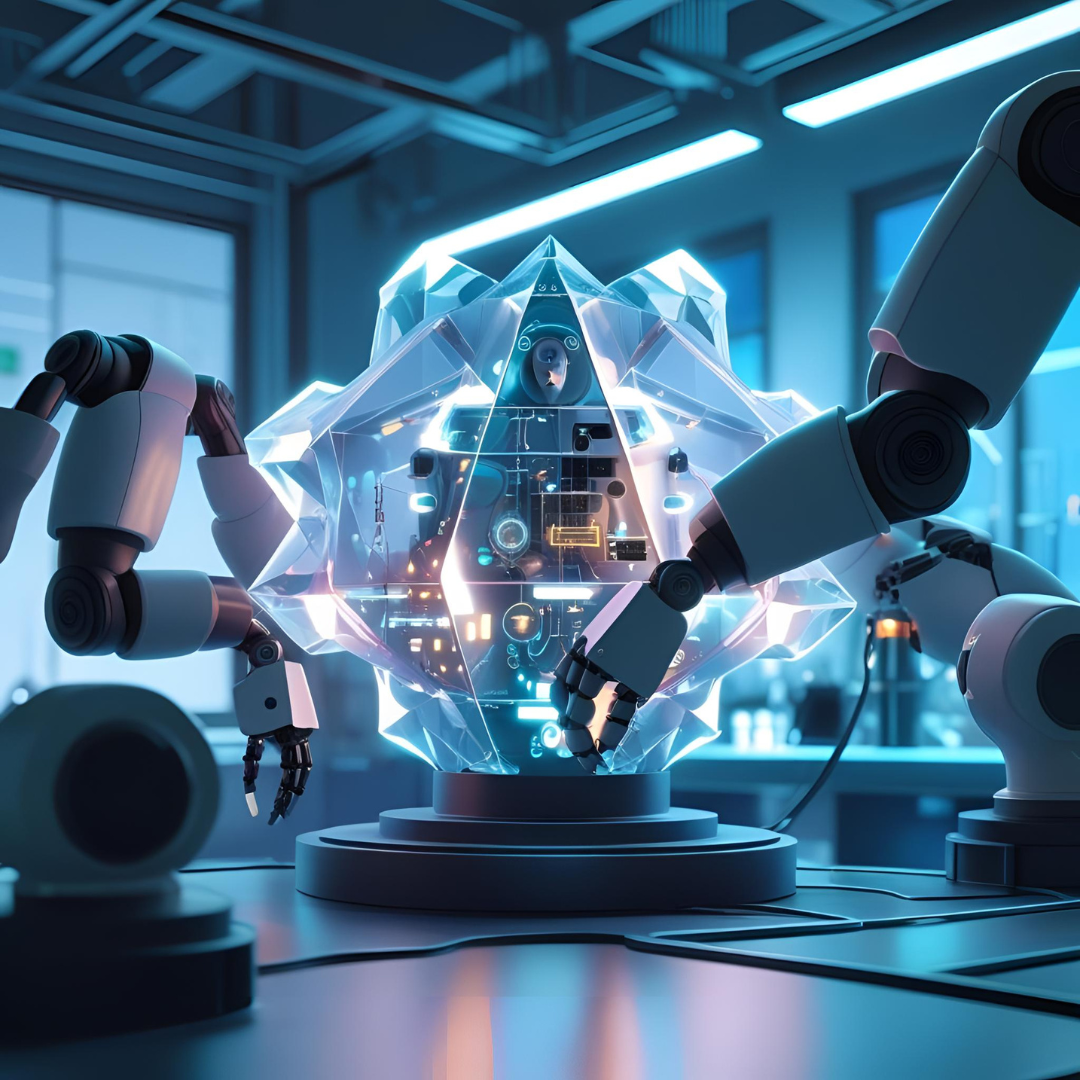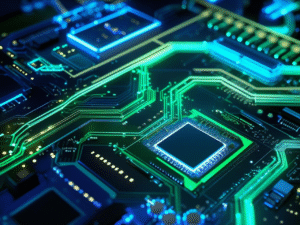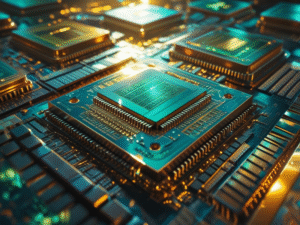Table of Contents
ToggleIntroduction
Artificial Intelligence (AI) has emerged as one of the most transformative technologies of the 21st century. It refers to the capability of machines and computer systems to perform tasks that traditionally require human intelligence, such as problem-solving, learning, decision-making, and language understanding. From recommendation engines on streaming platforms to self-driving cars, AI is integrated into almost every aspect of modern life. With rapid advancements, AI has become a driving force behind innovations in healthcare, finance, education, transportation, manufacturing, and countless other fields.
This article provides a comprehensive overview of artificial intelligence, covering its history, types, techniques, applications, advantages, challenges, and its potential role in shaping the future of humanity.
The History of Artificial Intelligence
The idea of creating machines capable of mimicking human intelligence is not new. It dates back to ancient myths and legends about artificial beings. However, the scientific foundation of AI was laid in the mid-20th century.
1950s – The Beginning: British mathematician Alan Turing introduced the famous Turing Test in 1950, proposing a way to evaluate whether a machine could exhibit intelligent behavior indistinguishable from humans. In 1956, John McCarthy coined the term Artificial Intelligence at the Dartmouth Conference, marking the birth of AI as a research field.
1960s–1970s – Early Growth: Early AI research focused on symbolic reasoning and problem-solving. Programs like ELIZA (an early chatbot) demonstrated basic natural language processing. However, the limited computing power of the time slowed progress.
1980s – Expert Systems: AI saw renewed interest with the rise of expert systems—programs designed to mimic human decision-making in specialized domains. However, the high costs of development and limited capabilities led to another decline, known as the “AI Winter.”
1990s–2000s – Machine Learning: With improvements in computing power, machine learning techniques allowed systems to “learn” from data rather than being explicitly programmed. IBM’s Deep Blue defeated world chess champion Garry Kasparov in 1997, showcasing the potential of AI.
2010s–Present – Deep Learning and Big Data: The rise of big data and neural networks revolutionized AI. Technologies like computer vision, natural language processing, and reinforcement learning advanced rapidly. AI-powered systems like Google Translate, Siri, and autonomous vehicles became mainstream. In 2016, Google’s AlphaGo defeated the world champion in the complex game of Go, further cementing AI’s dominance.
Types of Artificial Intelligence
AI can be categorized into different types based on its capability and functionality.
Based on Capability
Narrow AI (Weak AI): Designed to perform specific tasks efficiently but lacks general intelligence. Examples include voice assistants, chatbots, and recommendation systems.
General AI (Strong AI): A theoretical form of AI that can perform any intellectual task a human can do. It is still under research.
Superintelligent AI: A future concept where AI surpasses human intelligence, capable of independent reasoning, creativity, and problem-solving. This remains hypothetical and raises ethical concerns.
Based on Functionality
Reactive Machines: Basic AI systems that react to current inputs without memory (e.g., IBM’s Deep Blue).
Limited Memory: AI systems that use past data to improve decisions (e.g., self-driving cars).
Theory of Mind: A future type of AI that can understand emotions, beliefs, and intentions.
Self-Aware AI: A highly advanced form of AI with consciousness and self-awareness, still theoretical.
Core Techniques in Artificial Intelligence
AI relies on various technologies and algorithms to simulate human-like intelligence.
Machine Learning (ML): Enables systems to learn from data and improve performance without explicit programming.
Supervised Learning (uses labeled data)
Unsupervised Learning (finds patterns in unlabeled data)
Reinforcement Learning (learns through trial and error).
Deep Learning: A subset of ML that uses neural networks with multiple layers to process complex data like images, speech, and text.
Natural Language Processing (NLP): Allows machines to understand and interact using human language. Examples include chatbots, translation tools, and sentiment analysis.
Computer Vision: Enables machines to interpret visual data from images or videos. Applications include facial recognition and medical imaging.
Robotics: Integrates AI with machines to create robots capable of performing tasks autonomously.
Expert Systems: Programs designed to simulate the decision-making abilities of human experts.
Fuzzy Logic and Genetic Algorithms: Approaches that deal with uncertainty and optimization problems.
Applications of Artificial Intelligence
AI is reshaping industries and societies globally. Some major applications include:
Education
Personalized learning platforms adapt content to individual student needs.
AI chatbots act as virtual tutors.
Administrative tasks are automated, allowing educators to focus more on teaching.
Business and Finance
AI enhances fraud detection in banking.
Virtual assistants improve customer service.
Predictive models help with investment decisions and risk management.
Transportation
Autonomous vehicles reduce human error and improve road safety.
AI optimizes traffic management in smart cities.
Logistics companies use AI for route optimization and supply chain efficiency.
Manufacturing
AI-powered robots automate assembly lines.
Predictive maintenance prevents machine failures.
Quality control is enhanced through computer vision systems.
Agriculture
AI assists in crop monitoring, soil analysis, and precision farming.
Drones powered by AI help in pesticide spraying and irrigation management.
Entertainment
Streaming platforms like Netflix and Spotify use AI for personalized recommendations.
AI generates realistic visual effects and even music compositions.
Advantages of Artificial Intelligence
Efficiency and Accuracy: AI performs tasks faster and with fewer errors than humans.
Automation of Repetitive Tasks: Reduces human workload.
24/7 Availability: AI systems like chatbots work continuously without fatigue.
Data Analysis: AI processes massive data sets to find patterns beyond human capability.
Enhanced Decision-Making: Predictive analytics improves strategic planning.
Challenges and Limitations of Artificial Intelligence
Despite its immense potential, AI comes with several challenges:
Job Displacement: Automation may replace millions of jobs, raising concerns about unemployment.
Bias in AI Systems: AI models trained on biased data can produce unfair outcomes.
Ethical Concerns: Issues include privacy violations, surveillance, and autonomous weapons.
High Costs: Developing advanced AI systems requires significant resources.
Lack of Creativity and Emotion: AI lacks true creativity, empathy, and moral judgment.
Security Risks: Hackers can exploit AI systems for malicious purposes.
Ethical and Social Implications of AI
As AI becomes more powerful, ethical considerations are critical. Key concerns include:
Privacy: AI systems often collect vast amounts of personal data. Protecting user privacy is crucial.
Bias and Fairness: AI must be designed to ensure fairness and avoid discrimination.
Accountability: Who is responsible when an AI system makes a mistake?
Autonomous Weapons: The use of AI in military applications raises moral questions.
Human-AI Collaboration: Ensuring AI complements human efforts rather than replacing them.
The Future of Artificial Intelligence
The future of AI holds both promise and uncertainty.
Integration in Daily Life: AI will become more deeply embedded in healthcare, smart homes, education, and transportation.
General AI: Research may eventually lead to the development of machines with human-like intelligence.
Human-AI Symbiosis: Rather than replacing humans, AI will augment human capabilities.
AI in Creativity: Future AI could generate art, literature, and music indistinguishable from human creations.
Regulation and Governance: Governments and international organizations will need to create policies to ensure safe and ethical AI use.
Some experts predict AI could revolutionize fields like medicine by discovering cures for complex diseases, while others warn of risks if AI surpasses human control. The balance between innovation and caution will determine how AI shapes society.
Conclusion
Artificial intelligence is no longer a futuristic concept—it is a reality shaping the present and redefining the future. From healthcare and education to business and entertainment, AI is revolutionizing every sector. Its potential is immense, but it also brings significant challenges related to ethics, employment, and security.
The true measure of AI’s impact will depend on how humanity chooses to harness it. With responsible development, ethical regulations, and a focus on human-AI collaboration, artificial intelligence can be a force for progress, improving lives and solving global challenges.
As we stand at the threshold of an AI-driven era, one thing is certain: artificial intelligence is not just a technological advancement, but a defining feature of the 21st century, shaping how humans live, work, and interact with the world.



